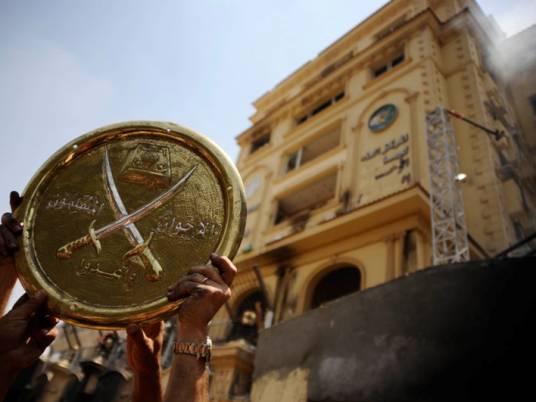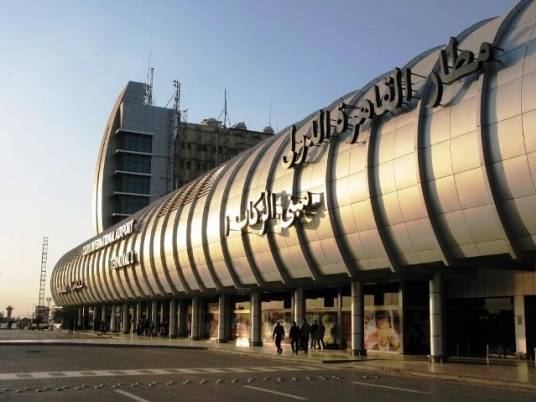
The 48-hour deadline set by the armed forces for Egyptian politicians to respond to popular demands, which ultimately lead to the ouster of former President Mohamed Morsy, has raised an old question: What were the reasons behind the Muslim Brotherhood's failure to properly read the major currents in Egypt’s modern history?
During the 1930s and 1940s, the Brotherhood allied with King Farouq against the Wafd Party in order to achieve its dream of an Islamic league through which Farouq sought to become the Caliph of the Muslim world.
However, Britain, which preferred an Arab rather than an Islamic league, objected to the idea and pressured on King Farouq to abandon his alliance with the Brotherhood. The monarch yielded in 1948 by disbanding the group. The group responded to the King's measure by assassinating former Prime Minister Mahmoud Fahmy al-Noqrashy, an action that pushed it into crisis and exclusion after a period of accord with Farouq, or “the good youngman” as they called him.
During the 1952 Revolution, late President Gamal Abdel Nasser brought the group back to the forefront of the political scene and revoked Farouq's dissolution decree.
But no sooner had Nasser sought to tap into the group's popularity to embolden his own rule than disagreements emerged. Both sides became bent on eliminating each other. Nasser found his opportunity in his assassination attempt in 1954, which became famously known as the "al-Manshiya incident." The president used the popular impetus against the Brotherhood's violent methods to neutralise the group.
That marked the start of an era of long detentions for the Brotherhood that lasted until Nasser's death in 1970.
Most remarkably, Nasser's persecution of the Brotherhood was met with both popular cheers and political silence. This is not to suggest that political forces were complicit with the president, but Nasser had already decided, before his clash with the Brotherhood, to ban all political parties with the group's blessings.
Therefore, the Brotherhood found no support when Nasser disbanded the group again.
The Brotherhood had, arguably, frustrated Egypt's democratic experiment before the July 1952 revolution by allying themselves with the royal palace against the Wafd Party, and then by legitimizing Nasser's undemocratic measures concerning political parties, all for the sake of exclusive power. But the winds blew against their ship and Nasser eliminated the group before it attempted to do away with him.
The 1960s saw another wave of Nasserist repression of the Brotherhood. Collective detentions of Brotherhood figureheads reached their thousands, most notably Sayyed Qutb who had been executed in 1965 for attempting to revive a banned organization.
Following years of persecution and political isolation against the Muslim Brotherhood under Nasser, his successor, Anwar al-Sadat, adopted a maneuver that used the Brotherhood and other Islamist groups as a bargaining chip in the face of leftist currents.
He was, therefore, able to proceed confidently towards establishing his legitimacy, free from pressures by Nasserist strongholds. But the president turned against the group by the end of his reign and sent them to jails side by side with Nasserists, communists, and other political forces as part of his famous “September decrees."
That period saw countless Brotherhood members leave Egypt, something that had already started under Nasser. That wave of migrations helped the Brotherhood establish bases in several other countries.
However the Brotherhood's "failure syndromes" started to appear during the first half of the 20th century. History seemed to repeat itself with the breakout of the January 2011 revolution. The Brotherhood, under the spell of its historical failure syndrome, namely relating to influence and organization, sought to reap the harvest of the revolution before it was ripe. The group were deeply involved in the electoral scene to foster a majority, clashing equally with both Islamist allies and liberal rivals.
Alas, they failed either to maintain parliament or assume authority. The syndrome persisted, and the Brotherhood continued to refuse to pursue their goals step by step.
After Mohamed Morsy was elected as Egypt’s president, he vowed to be a president of all Egyptians, and that all should bear responsibility for building a new Egypt that welcomes differences without exclusion.
But the speech seemed inconsistent with the Brotherhood’s syndrome. The group did not hesitate to surround the president with aides and advisors from its own ranks, according to resigned advisers who exposed the Brotherhood’s influence within the presidential court.
Consequently, efforts for national reconciliation failed. Day by day, the former president started to lose more of his popularity. He was challenged by allies and rivals alike. The presidency began to lose prestige, and Morsy became unable to portray an image of himself as a free, decisive leader.
The writer is a researcher in Al-Masry Studies and Information Centre. The analysis was written in Arabic and was translated by Mohamed Mostafa.




